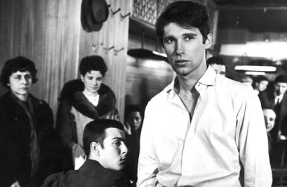
In The Green Ray (2001), British artist Tacita Dean famously managed to capture on 16mm film the fleeting light that the sun leaves behind right at the moment when it disappears from the horizon. And, because a digital camera used by others at the same time, on the same beach, was unable to capture it, her film proves two things: one, that the green ray, despite being missed by almost all who try and see it, is not a legend; two, that only film can capture it. But the evidence is elusive, as Éric Rohmer found out while shooting Le rayon vert (1986), eventually choosing to underline through slow motion and heavy colour correction the phenomena he had been desperate to obtain for seven months (which was eventually captured by cinematographer Philippe Demard in the Canary Islands). Since no single frame actually shows the colour green in Dean’s film, and it only seems to be produced by the rapid succession of frames in the projector, a button allows visitors to rerun the two-minute reel to convince themselves it actually happened. But this is at the expense of the film itself, as the image slowly fades out with each repeated viewing, its transient nature akin to the elusiveness of the natural phenomenon.
A similar analogy between cinema and nature’s glorious visions seems to be celebrated in Dean’s dazzling , a 22-minute 16mm film comprising approximately 25 shots, which premieres in the Wavelengths section at the Toronto International Film Festival in September after being shown at Marian Goodman’s Paris gallery this summer. The film starts with the day breaking over salt flats in Utah, where the only recognizable object is some sort of lamp pole or antenna blinking on an orange sky. But what seems at first glance to be clouds or hills are pure mirages resulting from specific atmospheric






